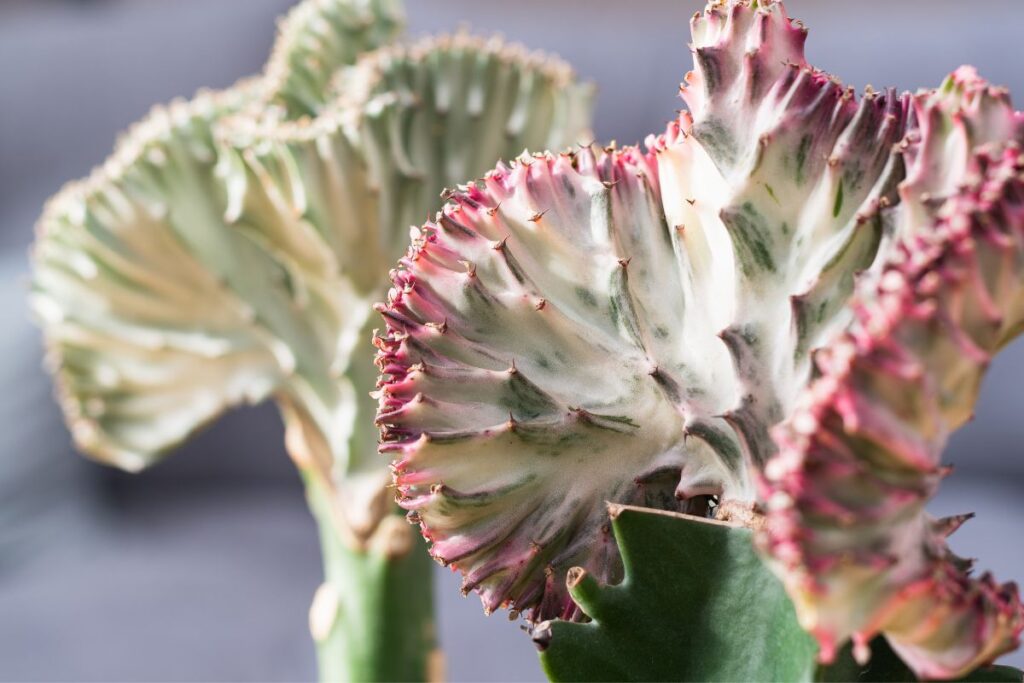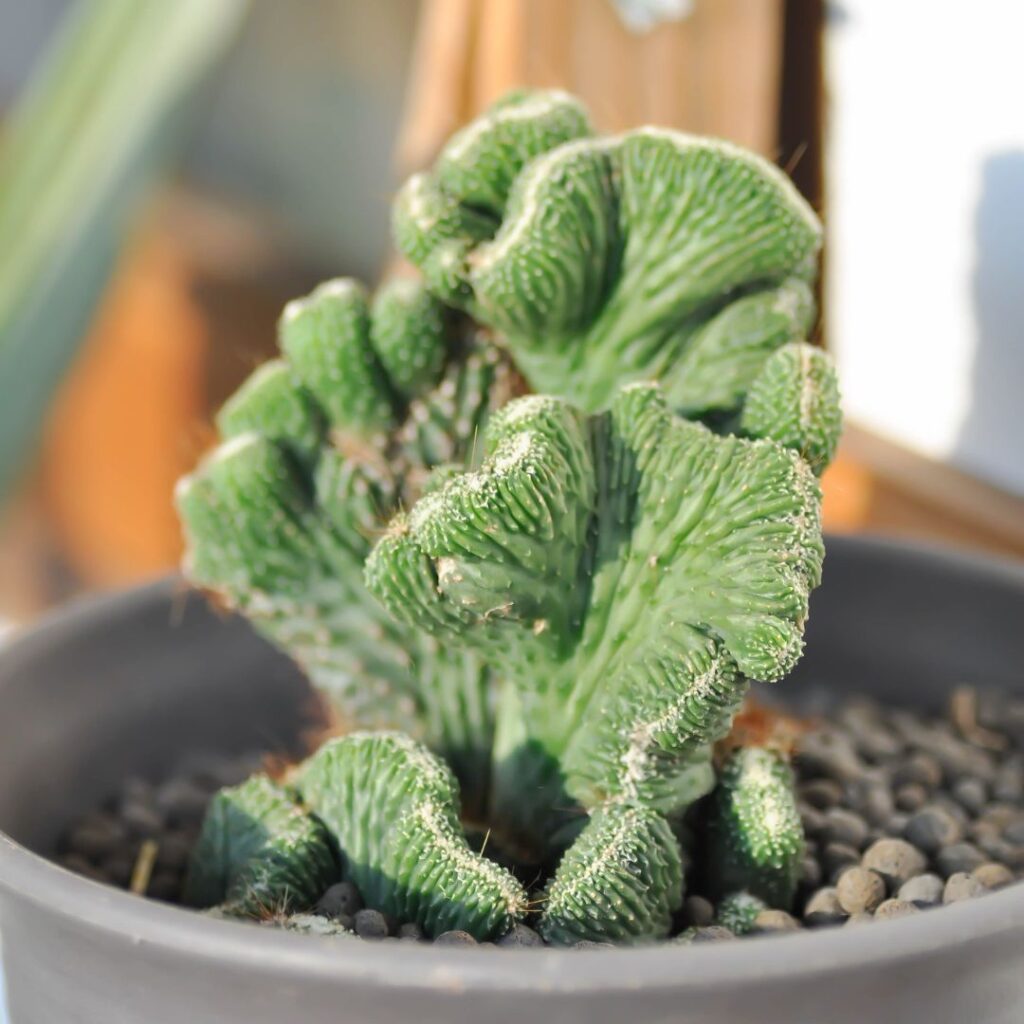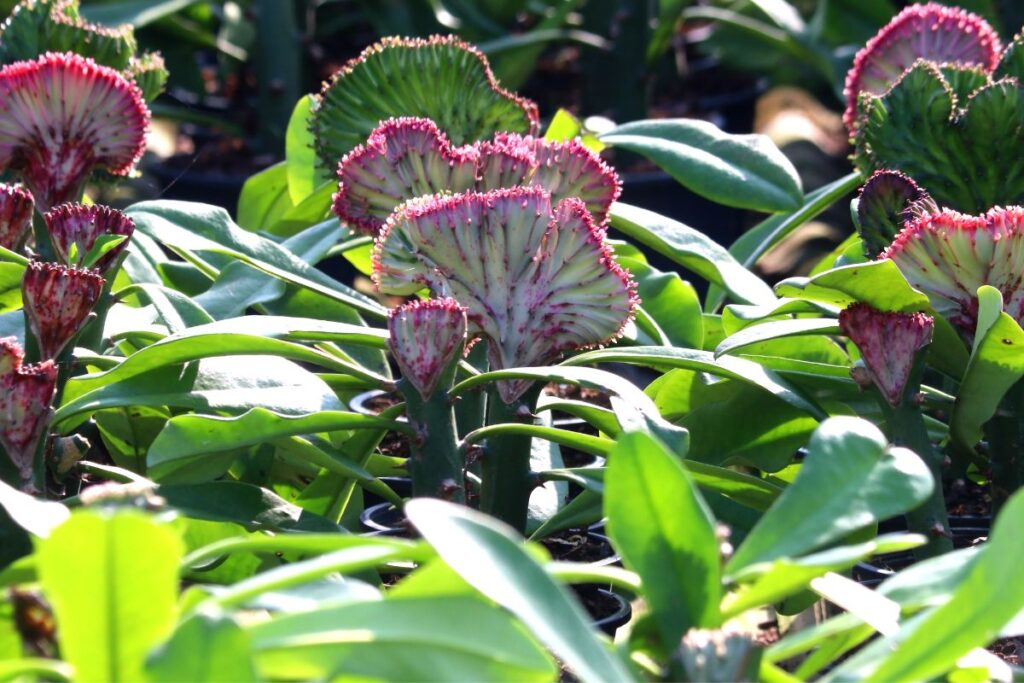5 Reasons Your Coral Cactus is Struggling (And How to Fix Them)
Oh no, your pretty coral cactus isn’t looking too happy lately. The vibrant colors have faded, the stems are getting wrinkly, and those cute little nubs seem deflated. What’s going on with your beloved prickly plant?
If your coral cactus is struggling, don’t worry – I’ve got the lowdown on the most common reasons why, and how to nurse it back to health. By the end of this blog, your cactus will be bloom-ing with life again! Let’s dive into the 5 biggest issues:

Contents
1. Thirsty Soil
Cacti are desert plants, but that doesn’t mean they never need a drink! Overly dry soil is one of the top reasons coral cacti start shriveling up. Stick your finger into the soil up to the second knuckle – if it’s bone dry down there, your cactus is begging for hydration.
The Fix: Give your thirsty cactus a nice long soak, until water starts draining out the bottom of the pot. Then, let the soil dry out completely before watering again.
2. Sopping Wet Conditions
On the flip side, coral cacti really hate sitting in soggy soil for too long. Their roots will start rotting away, causing the whole plant to wither and discolor. Yuck!
The Fix: If the soil is constantly wet and dense, you’ll need to re-pot your cactus ASAP. Use a fresh potting mix designed for cacti and succulents that drains really well. And go easy on the watering routine.
3. Not Enough Sunbathing
These sun-loving cacti need at least 6 hours of direct sunlight per day to stay vibrant and perky. If yours is stuck in a dim corner, it’ll start stretching out and turning an unhealthy faded green color.
The Fix: Gradually introduce your cactus to more sunlight each day by moving it closer to a window or outside. Too much intense light right away can cause sunburn!
4. Chilly Temperatures
Just like you, coral cacti prefer it warm and toasty. Sustained cold air from drafty windows or chilly AC airflow is a major plant stressor that’ll make their growth sluggish.
The Fix: Aim to keep your cactus’s environment between 65-85°F year-round. You may need to insulate it from drafty areas or move it elsewhere seasonally.
5. Insect Infestation
Pests like mealybugs, spider mites and scale love making a home on cacti. If you notice fuzzy white clumps or thin webbing on your plant, it’s infested! These tiny bugs suck out the cactus’s nutrients.
The Fix: Dab the pests with an alcohol-soaked cotton ball, or spray the whole cactus with insecticidal soap. Keep it quarantined until the problem is resolved.

With a little TLC focused on the right soil, sun, temps and pest control, your sad-looking coral cactus should bounce back to its former eye-catching glory. Speaking of care needs, let’s cover two frequently asked cactus questions:
How Often Should You Water A Coral Cactus?
There’s no universal watering schedule that works for every cactus in every environment. The perfect schedule depends on a few factors like soil type, temperature, humidity levels, and the size of your plant and its pot.
In general though, you’ll want to deeply soak the soil and then let it fully dry out before watering again. During the warmer months when the cactus is actively growing, it may need a good drink every 1-2 weeks. But in winter when it’s dormant, you may only need to water once a month or so.
The best way to know if your coral cactus needs watering is to stick your finger down into the soil – if it’s dried out a few inches down, it’s time for another soak!
How Much Sun Does A Coral Cactus Need?

Coral cacti are full sun lovers and need at least 6 hours of direct sunlight per day. Morning and evening sun is best, as intense afternoon sun can cause sunburn.
If your cactus isn’t getting enough light, you’ll notice it start stretching out and changing color to a washed-out green hue. Inadequate sun exposure also prevents blooming and normal growth patterns.
For outdoor cacti, position them in an area that gets sunlight most of the day. Indoor cacti need a spot right next to a bright, sunny window. You may even need to supplement with a grow light during darker winter months.
Too much direct intense sun can also be an issue though, so aim for that nice sweet spot of 6-8 hours of bright light per day. A slightly shaded area in peak afternoon sun is ideal.
Stay vigilant about its care routine, and you’ll be enjoying those funky bright coral cactus blooms again soon! Let me know if you have any other questions.
